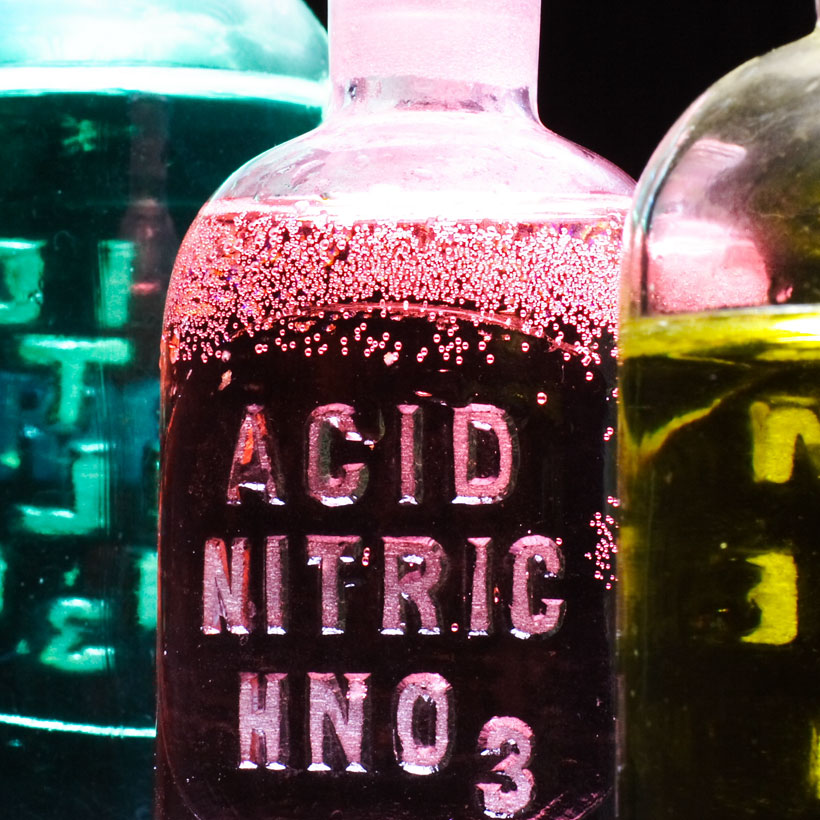Nitric acid & other chemical catalysts
Nitric acid is a key starting material to produce fertilizers, helping to boost arability and yield of farmland. Nitric acid is made in three stages. The first step is the oxidation of ammonia gas with air to form nitric oxide. To achieve high conversion efficiency, this is normally carried out at pressure over a platinum-rhodium catalyst. The nitric oxide is cooled and further oxidised to form nitrogen oxide, which is then absorbed in water to nitric acid.
In the process of forming ammonia, finely divided osmium metal can be used as a catalyst by combining hydrogen and nitrogen.
Non-fertilizer uses include the production of explosive-grade ammonium nitrate; adipic acid for making nylon, and toluene diisocyanate for manufacturing polyurethane.







